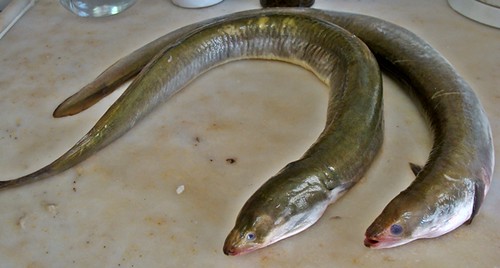
1. Water Rats Adapt to aquatic lifestyles with unique features
Water rats have a unique adaptation that allows them to thrive in aquatic environments: their fur is water-repellent, soft, and dense, while their hind feet are broad and partially webbed, giving them great strength and agility in the water. Their thick muscular tail is also heavily furred and mostly dark, with a white tip that serves as a warning signal to predators. This combination of features makes them excellent swimmers, allowing them to navigate their aquatic habitats with ease.
Also → The Advantages of Swimming for Rats
Advertisement2. A Unique Species of Rodent with Fur Ranging in Color
Water Rats are a unique species of rodent, with their fur ranging from dark on top to light-colored underneath. Depending on the individual, the belly fur can range from cream to a golden or orange hue. Interestingly, the more aggressive water rats tend to have darker fur underneath, making them easily distinguishable from their more docile counterparts.
Also → "Platypus: Unusual Mammal of Streams & Lakes"
3. Nocturnal Animals: Water Rats
Water rats are nocturnal animals that prefer to live a solitary life, moving from burrow to burrow in search of food and shelter. They are most active at night, when they emerge from their burrows to forage for food, such as insects, crustaceans, and small fish. They are also known to eat plant material, such as roots and seeds. Water rats are excellent swimmers and can be found in a variety of aquatic habitats, including rivers, streams, lakes, and wetlands.
Also → Otters: Semi-aquatic mammals with a playful nature
4. Unique Species with Distinctive Molars
Water Rats, also known as Rakali, are a unique species of rodent with a distinctive set of basin-shaped molars. These molars are quite different from those of other rodents, making them easily identifiable. The molars are adapted to their diet of aquatic invertebrates, which they crush and grind with their powerful jaws. Water Rats are found in coastal areas of Australia, New Zealand, and some Pacific Islands, where they are an important part of the local ecosystem.
Also → Gharials: The Carnivorous Reptiles of India
Advertisement5. Adapted to their environment
Water Rats, also known as Rakali, are native to Australia and can be found in a variety of freshwater habitats, from sub-alpine streams and inland waterways to lakes, swamps, irrigation channels and farm dams. These semi-aquatic rodents are well-adapted to their environment, with webbed feet and a thick, waterproof coat of fur. They are omnivorous, feeding on a variety of aquatic plants, insects, crustaceans, fish, frogs, and small mammals.
Also → Giant Pandas: The Most Well-Adapted Animal on Earth
6. " Carnivorous Hunters!"
Water rats are voracious carnivores, with a diet consisting of crustaceans, aquatic insects, fish, small birds, frogs, reptiles, spiders, and mussels. They will only resort to eating plants as a last resort. These rodents are highly adaptable and can survive in a variety of aquatic habitats, from rivers and streams to estuaries and wetlands.
Also → Jaguars: Big Cats of the South and Mexico
7. Water Rats Have Incredibly Durable Teeth
Water Rats have a unique set of teeth that set them apart from other rodents. Their incisors are chisel-shaped and have a hard yellow enamel coating on the front surfaces. This enamel is incredibly durable and helps the Water Rat to gnaw through tough materials like wood and plastic. The incisors are also used for grooming and cleaning their fur.
Also → How Fish Move Through Water
Advertisement8. Water Rats Enjoy a Meal in Style
Water rats are quite the sight to behold when they're enjoying a meal. They use their forepaws to hold their prey, then they'll find a log or rock to sit on and eat it noisily. It's almost as if they're savoring every bite, and it's a fascinating thing to witness.
Also → Caimans: Powerful Predators that Feed on a Variety of Prey
9. A Species Important to Ecosystem
Water Rats, also known as Rakali, are a species of rodent native to Australia and New Zealand. They are a medium-sized mammal, with their bodies ranging from 231mm to 370mm in length and weighing between 340g and 1275g. They are an important part of the ecosystem, as they help to control the populations of other animals, such as fish, frogs, and insects. They are also an important food source for many predators, including birds of prey, snakes, and foxes.
Also → Seals: Adapted to their aquatic environment
10. prolific breeders
Water rats are prolific breeders, with females capable of producing up to five litters per year. The breeding season peaks in the spring and summer months, with a gestation period of around 34 days. When the time comes, the female water rat will give birth to between one and seven young.









